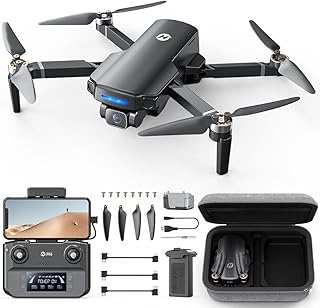Unmanned Aerial Vehicles: The Next Frontier of Innovation
Unmanned Aerial Vehicles (UAVs), more commonly known as drones, have rapidly evolved from military tools to ubiquitous platforms with applications across a vast range of industries. This evolution has ushered in a new era of innovation, reshaping the landscape of several sectors and offering unprecedented opportunities for progress.
The Unprecedented Potential of Drones:
Drones are revolutionizing industries by offering:
* Increased Efficiency and Cost Reduction: Drones can automate tasks previously done manually, saving time and labor costs. This is particularly impactful in industries like agriculture, construction, and inspection.
* Enhanced Data Collection and Analysis: Equipped with sensors and cameras, drones provide high-resolution imagery and data for mapping, surveillance, and environmental monitoring.
* Improved Accessibility and Safety: Drones can reach hazardous or difficult-to-access locations, enabling safer and more efficient operations in fields like search and rescue, disaster relief, and infrastructure inspection.
* New Business Models and Services: Drones are creating new markets and services, ranging from delivery and transportation to aerial photography and entertainment.
Key Sectors Embracing Drone Technology:
* Agriculture: Precision agriculture, crop monitoring, and pest control.
* Construction: Site surveying, inspection, and material delivery.
* Delivery & Logistics: Package delivery, transportation of goods, and aerial logistics.
* Emergency Response: Search and rescue, disaster relief, and emergency response coordination.
* Infrastructure Inspection: Bridges, pipelines, power lines, and other infrastructure inspection.
* Security & Law Enforcement: Surveillance, border patrol, and crime prevention.
* Film & Photography: Aerial photography, videography, and filmmaking.
* Environmental Monitoring: Wildlife monitoring, air quality analysis, and environmental mapping.
* Research & Development: Scientific research, data collection, and testing.
The Road Ahead: Challenges and Opportunities:
While drones offer significant advantages, several challenges need to be addressed:
* Regulations and Safety: Establishing clear regulations and safety protocols is crucial to ensure responsible drone operation and public safety.
* Privacy and Security: Addressing concerns about data privacy and security, particularly regarding surveillance and data collection, is paramount.
* Public Perception: Overcoming negative public perception and fostering public trust in drone technology is essential for widespread adoption.
* Technology Development: Continued research and development are required to improve drone performance, autonomy, and capabilities.
Conclusion:
Drones are reshaping industries and creating new possibilities, driving innovation across diverse sectors. As the technology continues to evolve, overcoming challenges and embracing responsible development will be crucial to unlocking the full potential of this transformative technology. The future of drones is bright, promising a future where automation, efficiency, and innovation take center stage, propelling humanity towards a more connected and advanced world.


